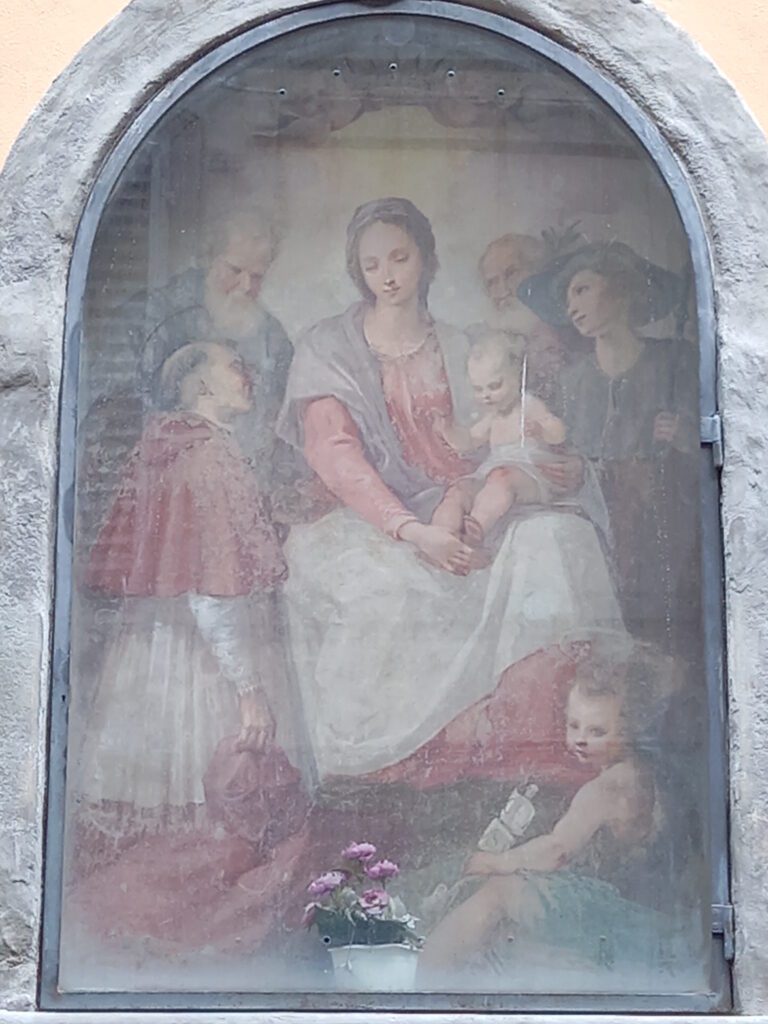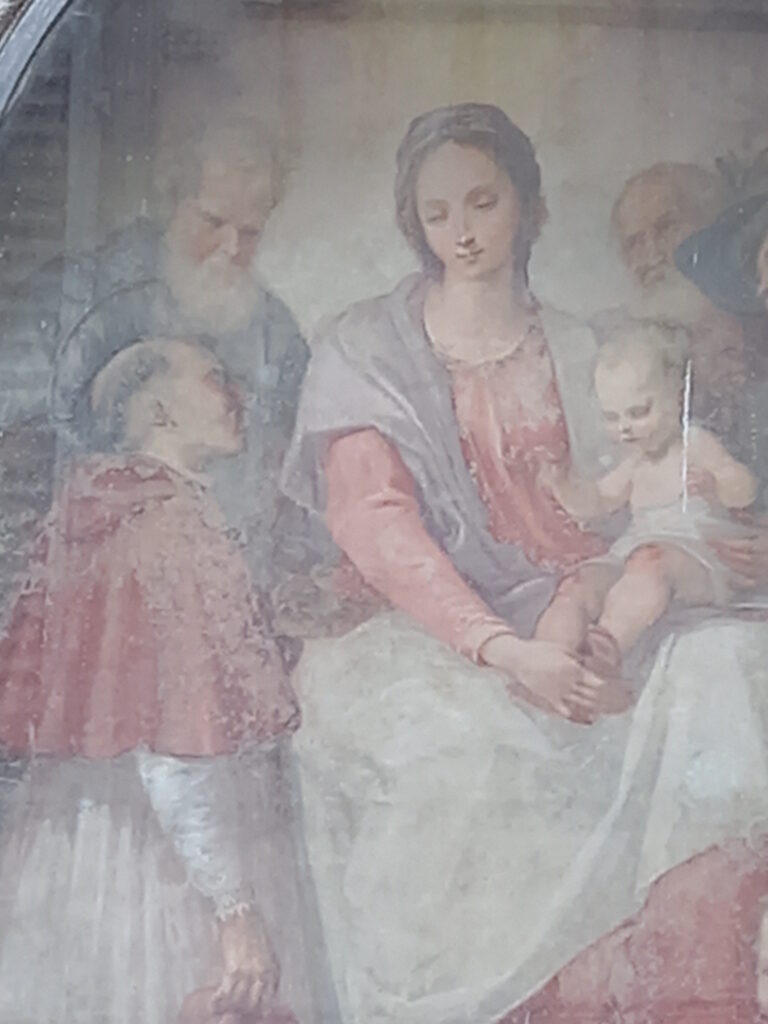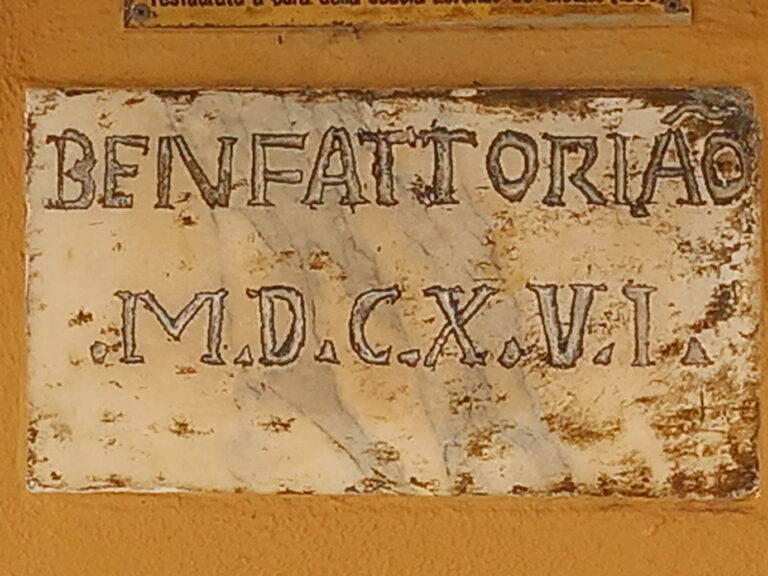via FAENZA n.42
the Tabernacles of Florence
THE TABERNACLE
Madonna col Bambino
The composition shows a lively San Giovannino in the foreground, stretched out like an ancient deity, and then - in succession, from right to left - San Carlo Borromeo, in mozzetta and cotta, in his scarlet cardinal's habit, half kneeling. Behind him is another religious man, intense-looking, with a white beard, traditionally identified as San Filippo Neri, although there is no objectively convincing evidence to consider him as such. Next, the group of the Virgin and Child and - to their right - a canny San Giuseppe and a young San Rocco, dressed as a pilgrim with a bizarre headdress adorned with a singularly crafted porcupine quills.
Tabernacle
The tabernacle is rather simple, featuring a base on corbels and a centered pietra serena aedicule. It is located on the exterior wall of the Sant’Onofrio monastery, popularly and commonly called "di Fuligno," because it was occupied by nuns from that Umbrian locality.
THE STREET
Via Faenza
This first stretch of street, between Piazza Madonna degli Aldobrandini and Via Nazionale, was once called borgo di Campo Corbolini and gave its name to the "Porta", located in what is now Piazza Madonna degli Aldobrandini, which was part of the 1172 circle of walls. At the end of the 13th century, with the construction of the new circle of walls, the Porta di Campo Corbolini was demolished and the "borgo" changed its name: first it was called Via della Stipa then, from 1870, Via Faenza, including the stretch leading to the Fortress. Here, near the actual Piazza del Crocifisso, was built Porta a Faenza, named after the Vallombrosian nuns, followers of the Beata Umiltà di Faenza (“Blessed Humility of Faenza”), who had their monastery nearby.
AUTHOR
Giovanni da San Giovanni
(San Giovanni Valdarno, March 20, 1592 - Florence, December 9, 1636) Giovanni Mannozzi, known as Giovanni da San Giovanni, an excellent master, painter, and fresco painter, was one of the leading Florentine decorators of the early 17th century. He distinguished himself early on for fresco works with decorative subjects: private chapels, tabernacles, and facades of wealthy Florentine patrician homes.
The artist
(San Giovanni Valdarno, March 20, 1592 - Florence, December 9, 1636) The painting of the Madonna and Child in Via Faenza is referable to Giovanni's manner and attributed to him, as are the tabernacle in Via Guelfa and the one under the Volta Vecchia. These are a series of works of thanksgiving, commissioned by those who had escaped the plague.
Tibdit
All historical sources agree that the tabernacle's original location was in the Via Nuova (currently, Via Bernardo Cennini), in front of the former convent of Sant’Antonio. In 1923 the tabernacle was moved to Via Faenza, where it can still be seen today.
GALLERY

Tabernacle
Via Faenza 42

Madonna col Bambino
Via Faenza 42

Plaque
Via Faenza 42



